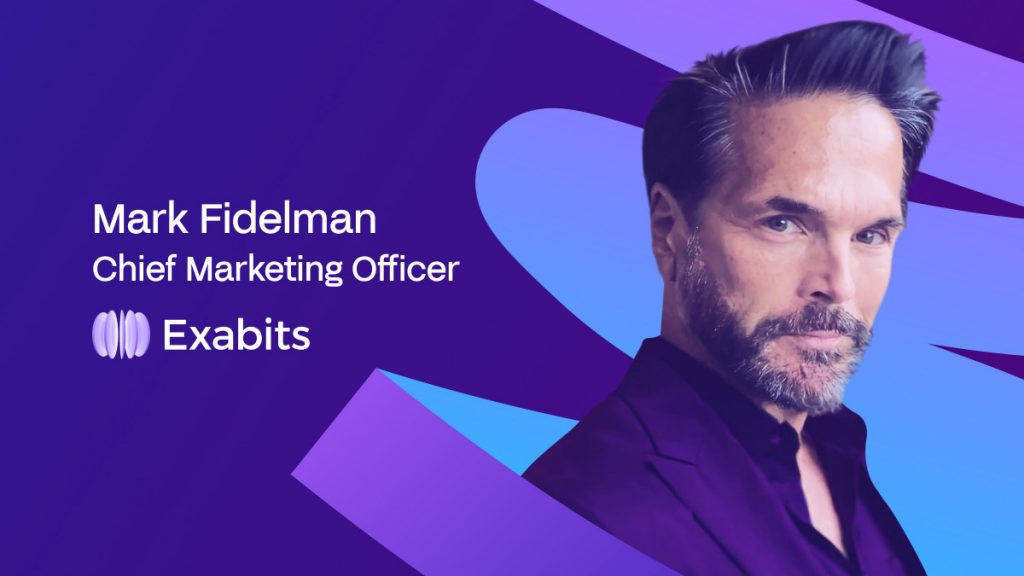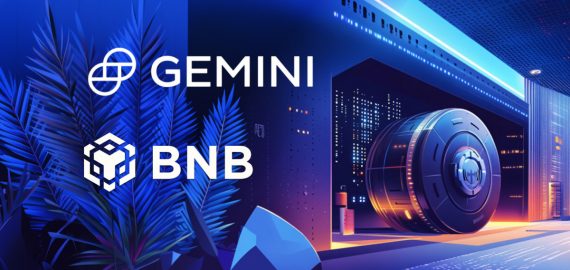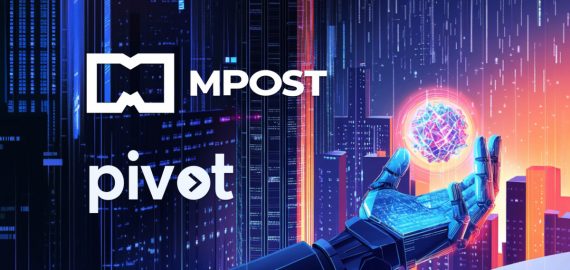Mark Fidelman’s Vision for Tokenizing AI Power in Web3


In Brief
Mark Fidelman discusses Exabits’ GPU-powered platform, Web3, and the future of AI, focusing on tokenization and decentralized infrastructure, fostering innovation, and meeting application demands.

Mark Fidelman’s journey from skepticism to passionate advocacy for Web3 mirrors the development of the industry itself. Mark began as a disbeliever in Bitcoin, but his breakthrough came with the launch of Ethereum, which led him to embrace the possibilities of decentralized technology. As the Chief Marketing Officer of Exabits, Mark is currently at the vanguard of AI and Web3 integration, pioneering a new age of decentralized, tokenized computing infrastructure.
In this conversation, Mark discusses how Exabits’ GPU-powered platform is transforming AI scalability and security while democratizing access to compute resources. He talks about the future of AI, Web3, and how Exabits intends to reshape the computing industry through tokenization and decentralized infrastructure. It’s a thrilling vision of AI and crypto working in harmony to fuel innovation and meet the demands of the next generation of applications.
Can you share your journey to Web3?
My journey to Web3 felt like the stages of grief. I would call it the stages of acceptance. When Bitcoin first came out, I thought it was funny money, fake money—just a joke, right? But it wasn’t a joke. I was a complete denier because it wasn’t backed by anything, and I couldn’t see how it would work long-term. However, it was the community’s faith and development that made it what it is today.
But it wasn’t until Ethereum came along that I finally got it. Programmable money made sense to me. From that point on, I became a huge believer and dove headfirst into space. That included all things decentralized and Web3, even elements of Web2. There’s still a lot of overlap, and I think that will continue. Now, when you add AI into the mix, it’s going to be an explosive space, especially with regulation coming into play. Everything is aligning, and I believe the combination of AI and crypto will be massive.
How does Exabits integration of 4000 NVIDIA GPUs enhance the security and scalability of AI computations?
The addition of our 4000 NVIDIA H200 GPUs, which we recently announced, significantly enhances both security and scalability for AI workloads. These GPUs feature trusted execution environment capabilities, which ensure verifiable and tamper-proof computations. This is critical for maintaining the integrity and privacy of mission-critical AI models.
On the scalability side, many enterprises lack the infrastructure we’ve built with this GPU cluster. We ensure workloads are distributed efficiently across high-performance GPUs, allowing developers to scale their AI models without bottlenecks or downtime. We provide predictable, high-throughput computing power without centralization risks.
What are the benefits of Exabits’ diverse GPU options?
Offering diverse GPU options is crucial. We provide a range from NVIDIA A100s, H100s, and H200s to innovative consumer-grade options like the RTX 4090s. This allows developers to choose resources based on their specific cost, performance, and scalability needs. Flexibility is key. Startups, enterprises, and Web3 projects can select tailored GPU resources for anything from AI training to real-time inference, avoiding overpaying for capacity they don’t need.
How does Exabits’ compute-based layer platform differ from traditional cloud compute platforms?
Traditional cloud providers like AWS, Google Cloud, and Azure operate on a centralized, pay-as-you-go model. Exabits, on the other hand, functions as a base-layer compute refinery for the AI economy. I like to describe it as refining oil. GPUs are like the oil of the industry, and we are the refinery making that oil more efficient and suitable for specific use cases. We don’t just rent out GPUs; we optimize, standardize, and tokenize compute power. This makes it more accessible, efficient, and liquid. In the future, with our token offering, users will be able to own a piece of the AI infrastructure rather than just renting it.
How does Exabits’ tokenization of GPU power enable users to become stakeholders in the AI compute economy?
We will be offering tokenized compute, representing fractional ownership of GPU resources. Instead of merely paying for compute like in traditional models, users can stake our tokens to earn rewards—similar to frequent flyer miles. This enables participants to own a share of Exabits infrastructure, earn yield from compute, and scale their AI workloads while maintaining liquidity and asset appreciation. The tokenized model transforms AI compute from a pay-as-you-go service into something participatory.
What are the key features of Exabits AI supercloud? How does it support the demands of modern AI applications?
Exabits supercloud is a hyper-optimized compute layer built specifically for AI, blockchain, and high-performance workloads. Key features include on-demand scaling, TEE-enabled secure computing for privacy and integrity, and AI-orchestrated workload management. We also have global AI-ready data centers standardized across 100 premium co-location sites.
This infrastructure is designed to handle large language models, generative AI, and AI-driven Web3 applications with industry-leading uptime and efficiency—all at roughly a tenth of the cost of centralized providers like Google, Amazon, and Microsoft.
What are the environmental considerations of Exabits’ high-performance GPU clusters? How does the company address them?
We prioritize energy consumption optimization and sustainability. Our AI-powered compute scheduling reduces idle GPU time by up to 90%, minimizing wasted energy. We also partner with green data centers, prioritizing carbon-neutral and low-latency facilities. Additionally, we utilize advanced cooling and heat recapture systems to lower our overall energy footprint. We recognize environmental concerns and are committed to being responsible actors in this space.
What are the key challenges Exabits faces in the AI compute industry? How does the company address them?
There are several challenges. First, GPU supply chain constraints. We address this through strategic procurement. If we hit capacity, we can quickly secure additional compute resources in a matter of weeks, compared to the industry standard of 8 to 20 weeks. Second, there is a lack of AI-ready data centers.
We’ve secured global AI co-location facilities, allowing us to optimize and deploy infrastructure within about two weeks. Third, compute liquidity issues. We introduced tokenized compute so users can stake or trade GPU capacity. Finally, compute utilization inefficiencies. Our AI workload orchestration increases GPU efficiency by two to four times. We refine the raw compute power, making it much more efficient.
Can you elaborate on your vision for the future of AI compute?
We will need a thousand times more compute capacity over the next few years due to AGI and AI bots. When everyone is running their AI agents 24/7, the demand will be unprecedented. We need decentralized solutions to avoid reliance on the big three cloud providers, who may pick and choose which projects they support.
We want to democratize access and optimize GPUs to deliver two to four times more performance. Our goal is to enable entrepreneurs and enterprises to run next-gen AI applications faster, cheaper, and smarter.
Can you also elaborate on Exabits’ roadmap?
Our roadmap involves optimizing our compute refinery, which transforms raw compute into efficient products. We aim to expand our standardized data centers globally and further optimize compute power—ensuring you need less of it to achieve the same results. That is our focus: more efficiency and broader access.
What are the key trends in the Web3 and AI markets right now, and how do they compare to last year?
AI compute is the new oil. Demand for GPUs is exploding and will continue to grow. Decentralized AI models are emerging, leading to autonomous AI agents and AGI. Jobs will change, but better jobs will arise. Regulation and AI ethics are becoming increasingly important; we need governance, compliance, and transparency. Tokenized infrastructure is also gaining traction. All these trends revolve around increasing compute needs.
Finally, what major developments can we expect in Web3 this year?
Tokenization and AI will push staking into the mainstream. Enterprise adoption will grow as companies realize the challenges of building their own infrastructure. Decentralized compute will become the norm, driven by the need for more capacity. There will be a rush for it. The decentralized Web3 space will play a leading role, similar to how SaaS reshaped the industry two decades ago.
Disclaimer
In line with the Trust Project guidelines, please note that the information provided on this page is not intended to be and should not be interpreted as legal, tax, investment, financial, or any other form of advice. It is important to only invest what you can afford to lose and to seek independent financial advice if you have any doubts. For further information, we suggest referring to the terms and conditions as well as the help and support pages provided by the issuer or advertiser. MetaversePost is committed to accurate, unbiased reporting, but market conditions are subject to change without notice.
About The Author
Victoria is a writer on a variety of technology topics including Web3.0, AI and cryptocurrencies. Her extensive experience allows her to write insightful articles for the wider audience.
More articles

Victoria is a writer on a variety of technology topics including Web3.0, AI and cryptocurrencies. Her extensive experience allows her to write insightful articles for the wider audience.

















































